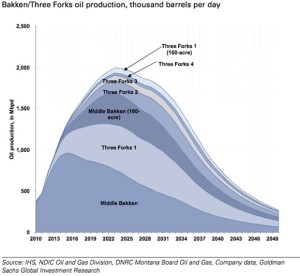The State of North Dakota hit 1,184,635 b/d oil in September 2014, setting a new record, according to the Department of Mineral Resources’ (DMR) November Director's Cut. That's 50,000 more b/d than August. During the same month, North Dakota also had record monthly gas production (1,403,448 mcf/d), and reported the highest number of producing wells to date (11,741).
But this month, the state's record breaking oil and gas activity is overshadowed by falling crude oil prices. September was a relatively good month for oil at ~93.00 on average for a barrel of West Texas Intermediate (WTI), but prices have dropped nearly ~$20 in the last two months.
According to the DMR's report, released on November 14, 2014, the current rig count is down 15% in the states five most active counties:
- Divide - down 54%
- Dunn - down 29%
- McKenzie - down 4%
- Mountrail - down 24%
- Williams- down 19%
DMR Director Lynn Helms blames the recent drop in the Bakken rig count directly on lower oil prices. The cost of drilling a Bakken well is high - anywhere between $8-million to $9-million. If the price of oil continues to fall, some producers, depending on their location in the play and a host of other factors, will scale back their Bakken drilling programs.
Read more: Bakken Study Analyzes Impact of Oil Prices on Development
Flaring Down in North Dakota Bakken
The natural gas flaring rate dropped from 27% in August to 24% in September. By comparison, the highest flared percent of natural gas was 36% in September of 2011.
New regulations have called for producers to reduce flaring to below 26%, starting with their October production figures. Helms recently pointed out that in addition to lower oil prices, flaring regulations could also impact Bakken development, because producers may face production restrictions if they fail to meet the new standards.
Beginning on June 1st, the North Dakota Industrial Commission (NDIC) began implementing its first in a series of policy changes aimed at reducing flaring in the Bakken.
Read more:NDIC Implements New Bakken Flaring Rule
Seismic Activity Up in North Dakota Bakken, But Leasing is Down
Seismic activity is up with seven surveys active or recording and five permitted. New leasing on the other hand has dropped off sharply. Most leases consist of renewals and top leases in the Bakken - Three Forks area.



